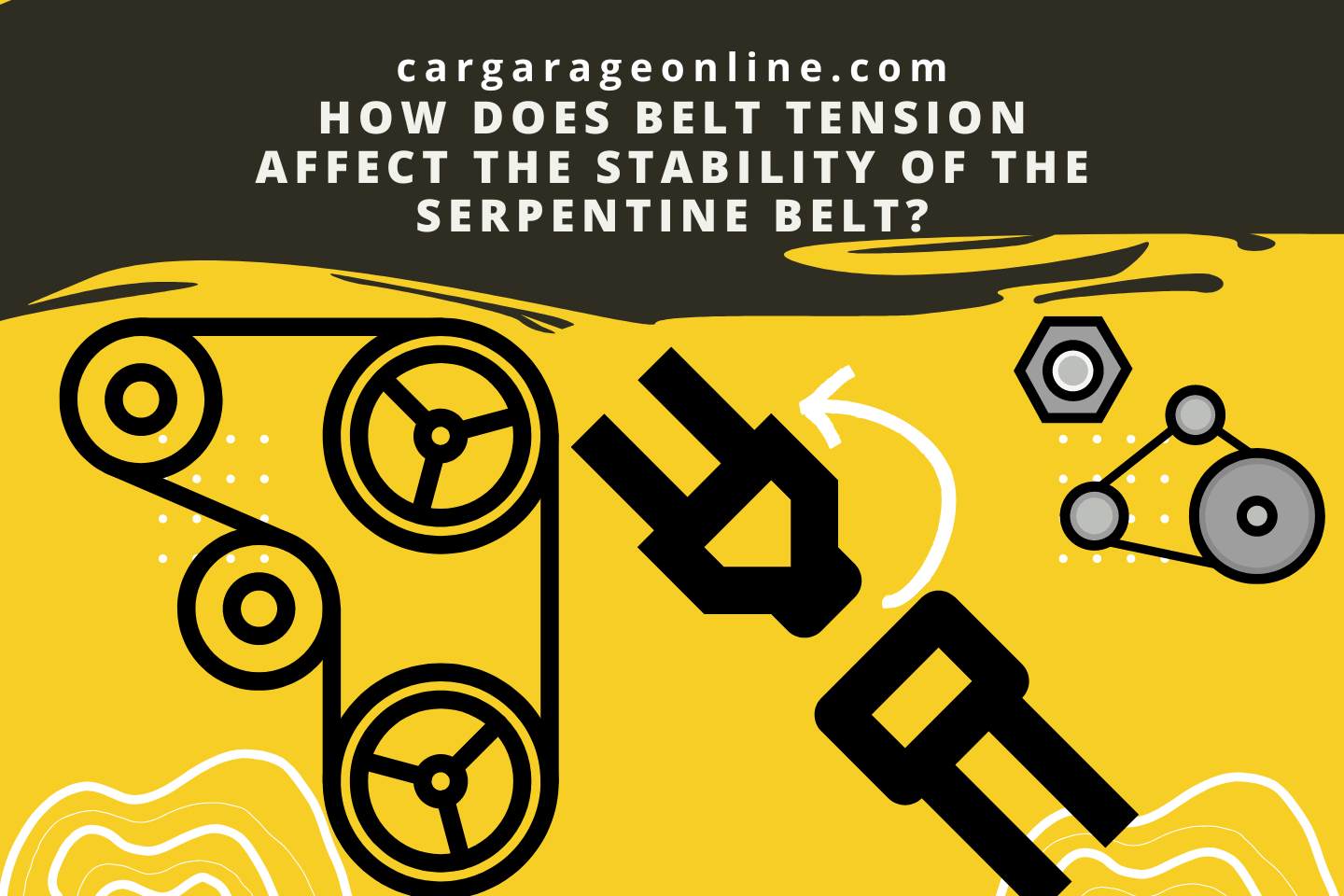Having a serpentine belt come off your vehicle’s engine regularly can be perplexing and irritating. The serpentine belt is responsible for driving essential parts like the alternator, power steering pump, and air conditioning compressor. It is critical to the smooth operation of your car. It frequently slips off from its original path, raising concerns about the underlying cause. Understanding why this problem occurs is critical to successfully identifying and resolving the issue. By identifying the possible causes of the reoccurring belt dislocation, you can embark on a dependable solution and restore your vehicle’s optimal performance.
What is the Function of a Serpentine Belt in a Vehicle?
The accessory belt is an important component in a vehicle’s engine system. Its main function is to transfer power from the engine’s crankshaft to numerous peripheral components.
The serpentine belt (accessory belt) connects and drives essential accessories like the alternator, power steering pump, air conditioning compressor, water pump, and supercharger or turbocharger.
The crankshaft spins while the engine rotates, providing mechanical energy. The serpentine belt harnesses this energy and delivers it to the connecting components.
The belt drives the alternator, which generates electrical power to charge the battery and run the vehicle’s electrical systems. The power steering pump uses the spinning of the belt to assist in moving the wheels smoothly.
The air conditioning compressor circulates refrigerant and cools inside using the belt drive. The belt drives the water pump and keeps the engine cool by circulating coolant.
The serpentine belt is a key link between the engine and many peripheral components, supplying power and synchronization.
Its continuous and smooth operation is critical for properly operating various accessories, guaranteeing efficient charging, steering, cooling, and overall vehicle performance.
Why does My Serpentine Belt Keep Coming Off?
Several underlying issues might cause a serpentine belt to come off repeatedly. Incorrect belt tension might be the cause. The belt may fall off the pulleys during operation if it is overly loosened. If the belt is too tight, it can put too much stress on the pulleys and produce misalignment, leading to belt dislocation.
Misalignment of pulleys is another typical cause. The belt can come off if any of the pulleys, like the alternator or power steering pump, is misplaced or not in the proper position. Misalignment may occur due to old or broken pulley bearings, malfunctioning tensioners, or improper installation.
Worn or broken pulleys might contribute to belt dislocation. If the pulley grooves are worn or broken, the belt will lose grip, increasing the possibility of it slipping off.
Other concerns include oil or coolant leaks that contaminate the belt and cause it to lose grip and the presence of debris or foreign objects in the belt’s path.
Addressing these difficulties requires carefully inspecting the belt, tensioners, and pulleys.
The problem can be solved by replacing old components, adjusting belt tension to manufacturer requirements, and assuring appropriate pulley alignment.
To diagnose and repair the exact root cause of the belt dislocation, get professional assistance from a technician or automotive specialist.
Why does a Serpentine Belt Coming Off Pose a Problem?
It causes significant problems with the vehicle’s functioning and performance. The serpentine belt drives critical components, including the alternator, power steering pump, and air conditioning compressor. These components lose power and fail to work correctly if the belt is not firmly fastened.
The lack of electrical charging capacity is one of the immediate consequences. The belt drives the alternator and produces electricity used to recharge the battery and power other electrical systems. When the belt is removed, the battery’s charge is depleted, resulting in a loss of power for critical operations like headlights, ignition, and electronic controls.
When the belt dislocates, the power steering system becomes unworkable. It makes steering significantly more difficult, especially at low speeds or during parking procedures.
If the serpentine belt drives the air conditioning compressor, its failure results in a loss of cooling capabilities, resulting in an uncomfortable cabin environment, particularly in hot weather.
A serpentine belt failure affects the vehicle’s critical systems and compromises general drivability and safety.
It is important to repair this issue as soon as possible to restore the belt and its related components, assuring optimal performance and the vehicle’s reliability.

How does Belt Tension Affect the Stability of the Serpentine Belt?
Belt tension is critical in maintaining belt stability and good performance. The belt tension regulates how firmly the belt holds up against the pulleys. When the belt tension is properly set, the belt and pulleys have ideal grip and traction.
Proper tension prevents the belt from slipping, ensuring that power is adequately delivered from the engine to the driven components.
If the belt is too loose, it can slip and cause power loss to the items it drives. It can result in faults like reduced alternator charge or inefficient power steering assistance.
Excessive belt tension might stress the belt and pulleys excessively, potentially resulting in rapid wear and damage. It can result in belt failure, higher friction, and increased engine strain. Finding the correct tension is critical for striking a balance between good grip and avoiding undue strain on the belt and pulleys.
How Do I Stop My Serpentine Belt from Coming Off?
You may take several steps to keep your serpentine belt from coming off. Make sure the belt is correctly tensioned. It is not too loose or too tight. Adjust the tension to the manufacturer’s recommendations.
Check all of the pulleys that the belt runs on. Check the tires for signs of wear, damage, or misalignment. Old or broken pulleys should be replaced, and misaligned pulleys should be realigned or adjusted. Check the belt’s overall condition as well.
It’s time to replace it if it displays severe wear, cracking, or fraying symptoms. Keep the belt clean and free of oil or coolant leaks, as these can lead it to slip.
Inspect the belt’s route regularly for any debris or other items that could block its movement. If the problem persists, advise you to speak with a professional technician or automotive specialist for a thorough inspection and diagnosis.
How to Maintain the Serpentine Belt from Coming Off?
Maintaining and preventing the serpentine belt from coming off requires constant attention and care. Inspect the belt regularly for wear, cracks, fraying, or damage symptoms. If any problems arise, replace the belt as soon as possible.
As well as, make sure the belt is correctly tensioned. Check the tension regularly and adjust it according to the manufacturer’s requirements.
Take note of the pulleys as well. Check them for signs of wear, breakage, or misalignment. Replace old or broken pulleys and correct or adjust any that are misaligned.
Maintain a clean belt path free of oil and coolant leaks, as they might cause the belt to slip. Check the belt’s route regularly for debris or other items that could obstruct its passage.
Finally, schedule regular maintenance and thorough checks with a professional mechanic or automotive specialist to maintain the belt’s durability and dependability.
Watch this one,
Video Credits – Auto Repair Guys
You May Also Like







![What Is The Best Penetrating Oil For Seized Engine? [Explained] Best Penetrating Oil For Seized Engine](https://cargarageonline.com/wp-content/uploads/2022/07/Best-Penetrating-Oil-For-Seized-Engine-100x70.jpg)